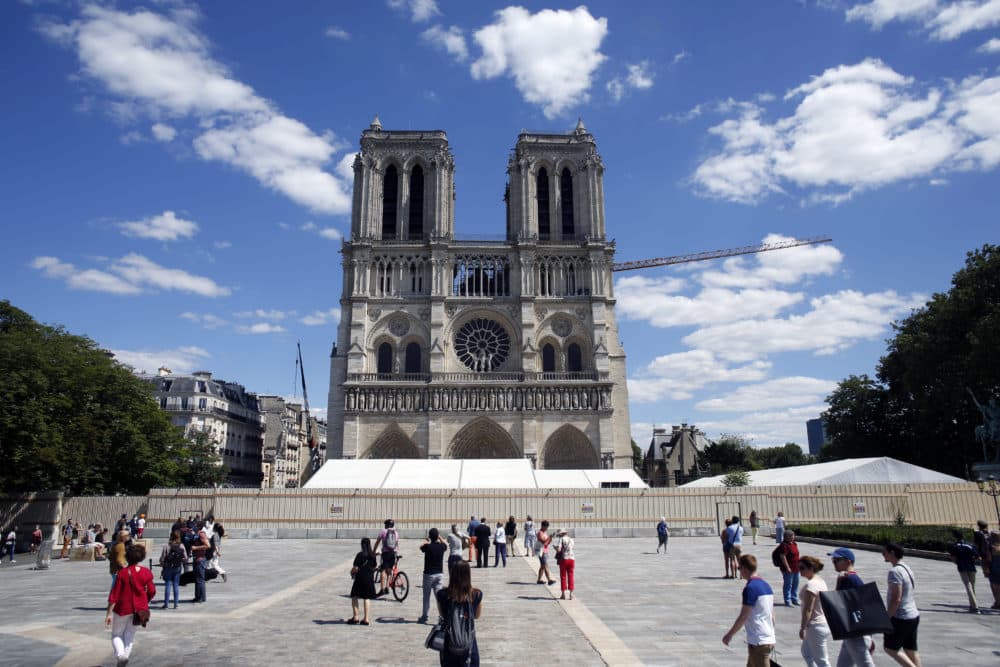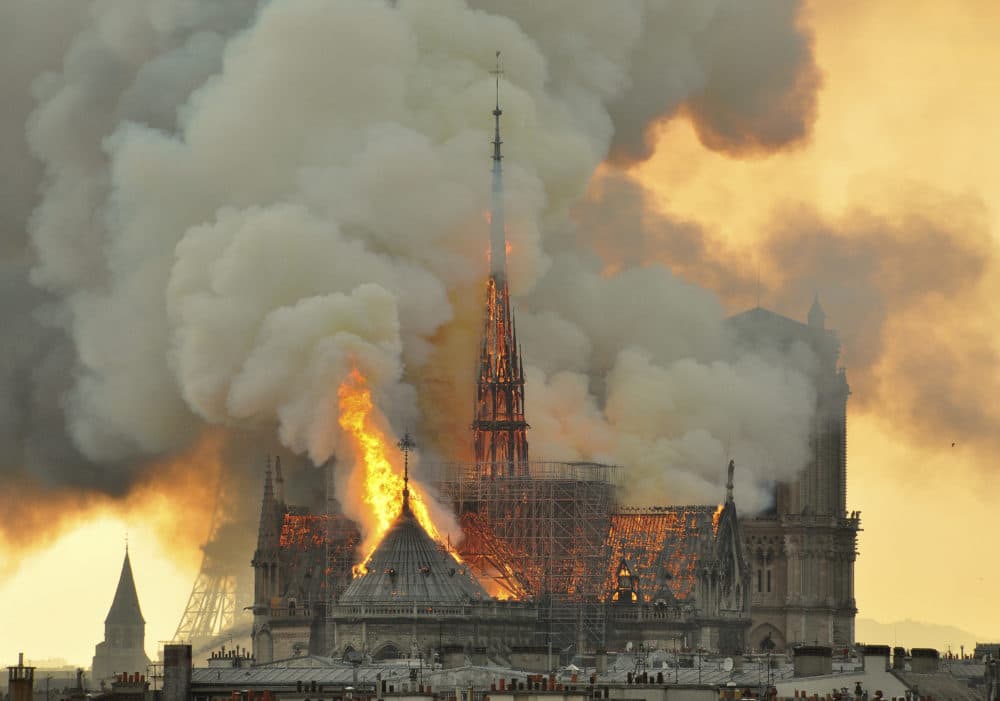Advertisement
Cleaning Notre Dame 'With Light': Expert Says Lasers Will Help Restore Cathedral To Former Glory
Resume
The rebuilding of the 857-year-old Notre Dame Cathedral in Paris is entering a new phase.
The cathedral's massive organ has been disassembled ahead of schedule for cleaning. And workers have removed construction scaffolding that melted during the catastrophic fire last year.
With the cathedral’s roof now gone, scaffolding is being constructed inside the building, says Time magazine Paris correspondent Vivienne Walt.
Restoring Notre Dame has led to new discoveries about the cathedral, such as that it’s not perfectly symmetrical, she says. And workers have reached the cathedral’s vaults for the first time in hundreds of years.
“No one had actually seen the top of this cathedral close up until now,” she says. “The fire, ironically, as tragic as it was, has become an absolute lesson for a whole range of different artisans and scholars.”
The lead roof melted in the fire, and dust coated the entire area. The schools and other buildings in the surrounding area — one of the oldest parts of Paris — were decontaminated after the fire.
Researchers believe there’s a large amount of lead contamination inside the building, she says. When Walt went inside Notre Dame after the fire, she had to wear a hazmat suit and shower upon leaving.
“Every single thing that touches the cathedral cannot be taken back out on the street,” she says. “So they're very, very serious about the lead pollution.”

Walt says she visited the “cavernous, dark” but crowded cathedral many times before the fire. Now, one of the most monumental places of worship in the world — that once saw 14 million tourists a year — is “echoing and empty.”
Architects point out the building looks worse than it is, she says, though the fire did ruin the 300-foot spire, the roof and a large part of the medieval oak vault covering the ceiling.
“Without a roof, you have this immense amount of sunlight pouring into this enormous space,” she says. “And you walk around, and it's just utterly awe-inspiring and also a little kind of devastating feeling.”
The morning after the fire, French President Emmanuel Macron announced that the cathedral would be rebuilt within five years.
The goal sounded ambitious, but Walt thinks Macron giving people a limited amount of time to make controversial decisions about the restoration was a smart move. People disagreed on whether to take a modern approach to restoration, for example, but Macron announced this summer that everything would stay the same.
The restoration team estimates that the first mass inside Notre Dame will happen on April 15, 2024 — the fifth anniversary of the fire, she says. The date is also during Macron’s reelection campaign and a few months before the Paris Olympics.
“It probably will take some time before you see 14 million tourists traipsing through there every year,” Walt says.
This year, the famous Notre Dame choir will sing inside the cathedral before Christmas. The performance will be live-streamed on French television.
“It's very much aimed at getting people to feel a sense of upliftment after what's been a very grueling year for the city and for the world and in some ways,” she says, “the beginning of a sense of healing.”
French officials are considering cleaning the inside surfaces of the cathedral with one of the newest technologies in art restoration: lasers. Chicago-based art restoration expert Bartosz Dajnowski invented the technique, which his company, GC Laser Systems, tested inside Notre Dame last month.
The technique uses light to weed out contamination without chemicals or mechanical abrasion, he says. Dajnowski’s lasers have cleaned the facade of the U.S. Supreme Court building and the lions in front of the New York Public Library.
“What we do is we calibrate our laser technology to excite the layer of contamination with laser pulses,” he says. “And when that contamination gets hit by a laser pulse, the molecules get so excited by the energy that they absorb, they literally shake themselves apart and just vaporize off the surface.”
Then, the company uses its patent-pending fume capture system to catch all of the contamination, he says.
Working from bottom to top in different areas of the cathedral, Dajnowski says the cleanup is progressing. The technique is able to maintain some of the grime from candle soot, for example, so that the restored cathedral doesn’t look brand new.
“Another advantage is that we can actually control how much we remove and how clean we make things look with different settings of the laser,” he says.
Dajnowski predicts the aesthetics and experience of the cathedral will remain the same, or at least very similar. And that’s important to him personally.
His father took him to Notre Dame when he was young to see the gargoyles, says Dajnowski, a Catholic. When the fire broke out, he feared he wouldn’t share the same experience with his sons.
“Inside, honestly, I had a feeling of hope as soon as I walked in,” he says, “and I'm not worried about it being brought back to its former glory.”
Lynn Menegon produced and edited this interview for broadcast with Jill Ryan. Allison Hagan adapted it for the web.
This segment aired on December 21, 2020.

